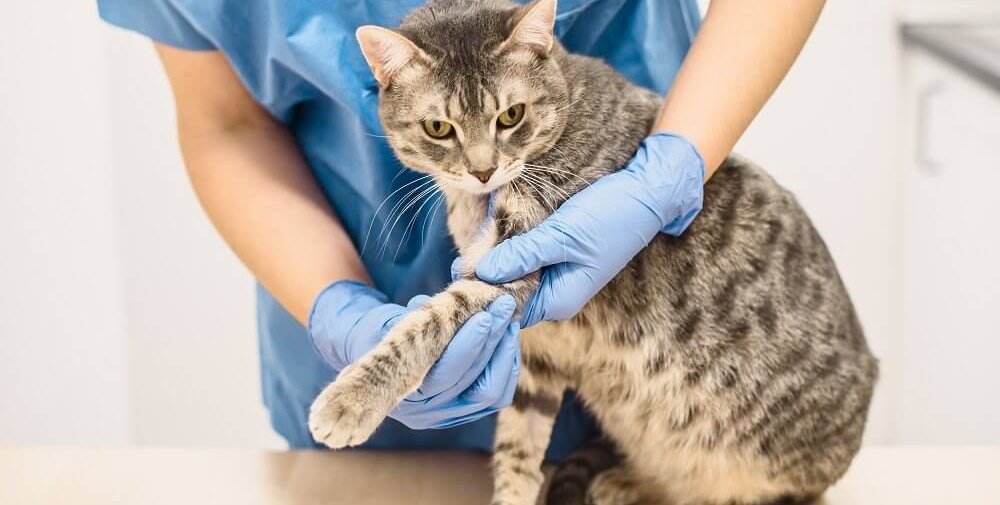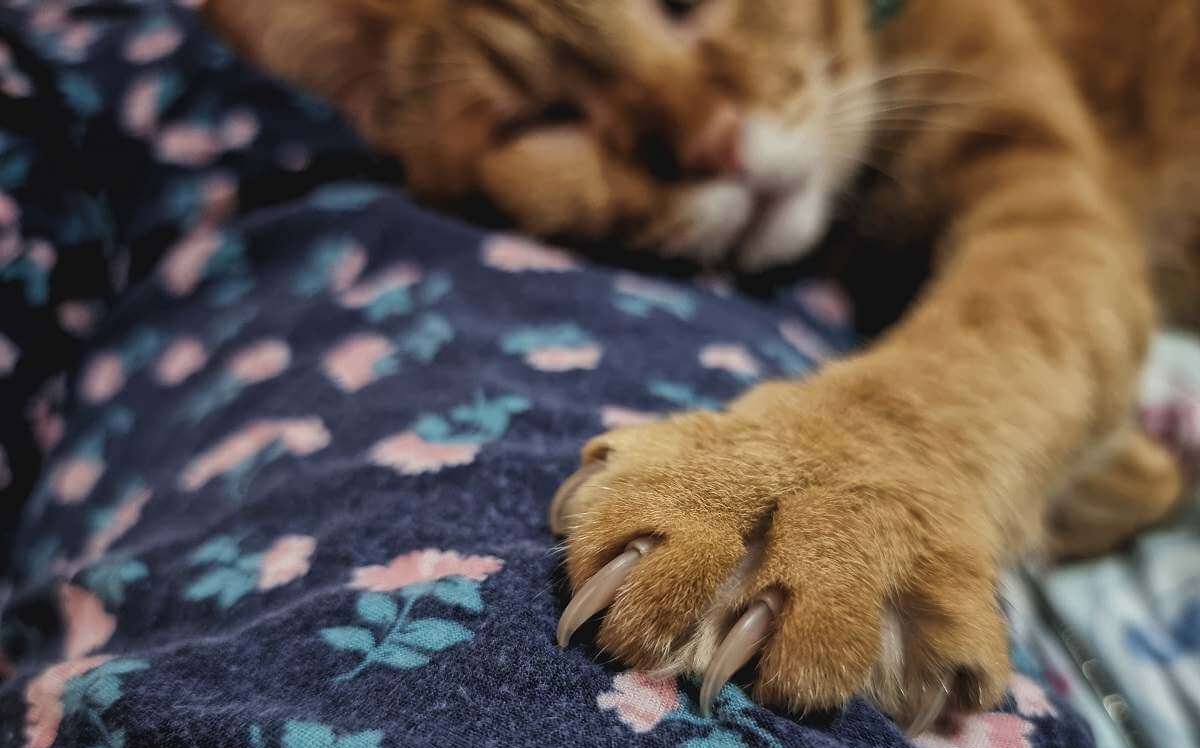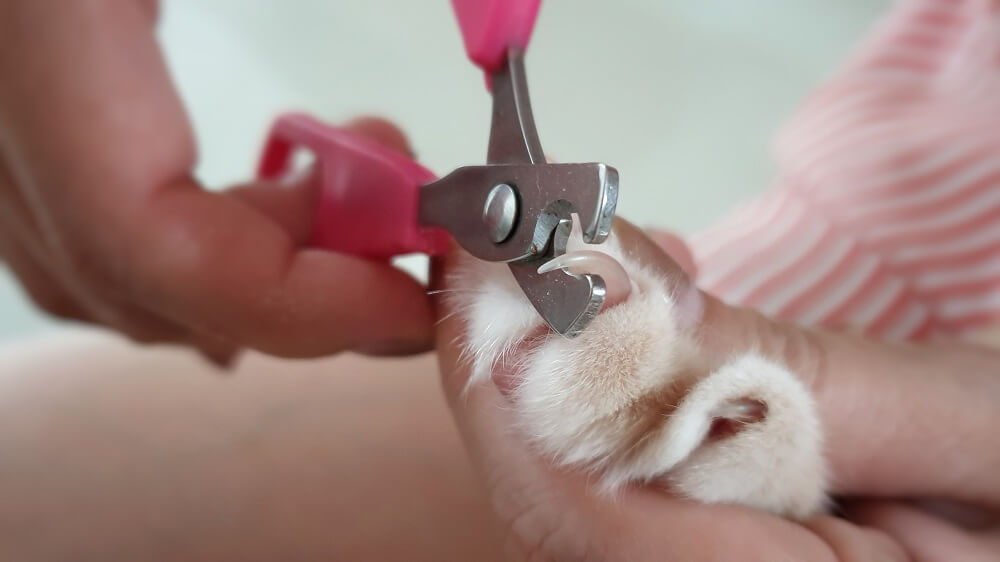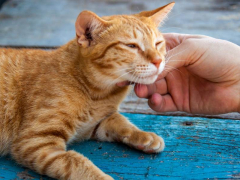
Csaba deli / Shutterstock.com
Cats are fast, nimble, and agile when they want to be. Being light on their feet means their paws are necessary to provide cushion and support.
Any injury to a cat’s paw can cause discomfort and limit their day-to-day activity. You may be wondering when it’s necessary to take them to the vet.
In this article, you’ll learn how to recognize the most common cat paw injuries, apply basic home care, and determine when it’s time to call your vet.
Causes of a Cat Paw Injury
A cat paw injury can be caused by many things. Here are some of the most common categories:
- Trauma:
- Bite wounds
- Insect bites or stings
- Scrapes, abrasions, cuts, and punctures
- Sprain or fracture from a fall
- Crushing-type injury (foot gets stepped on or something heavy falls on it)
- Ingrown toenails: Cats’ nails may overgrow, causing them to puncture a nearby paw pad or other surface of the foot.
- Allergy: allergy or immune conditions sometimes lead to redness and swelling of the foot or parts of it.
- Cancer: Although not an injury in the true sense, some foot cancers might look like an injury.[1]
Symptoms of a Cat Paw Injury

If a cat constantly holds up a paw, this might be the first sign of a paw injury. Amada Ekeli / Shutterstock.com
Regardless of what part of the paw is affected or the underlying cause, many of the symptoms of a cat paw injury appear similar. Some of the most common things you might see first include:
- Limping[2]
- Holding up a foot
- Excessive licking/grooming of the same foot
- Reluctance to have the paw held or looked at (assuming your cat will normally allow this)
- Hiding
If you have the opportunity to get a closer look at your cat’s paw, here are some more specific things to look for, broken down by the part of your cat’s foot that may be affected:
Claw/Nail
- Cracked or broken nail
- An overgrown nail (often curling around and growing into the paw pad of that toe)
- The nail is missing, leaving a fleshy red nub (the “quick” or fleshy tissue inside the nail)
- Discharge (either blood or white, green, or yellow pus material) around the nail or nail bed
- A swelling or growth around the nail or nail bed
Toes
- One or more swollen toes (if it’s hard to tell, try to compare to another foot)
- Fur missing from the toe
- Discharge (blood, pus, or any kind of colored fluid)
- Moist, damp, or matted fur
- Toes appear spread apart (often from swelling between them)
- Evidence of a puncture or hole between the toes
- Something foreign lodged or stuck between the toes or pads
Paw Pads
- Red or raw pads
- Swollen or “puffy” looking footpads
- A cut or puncture
- A hard or crusty appearance to the pad(s)
Whole Paw
- Hair loss in one or more areas
- Matted, moist, or sticky fur
- One foot is enlarged or swollen compared to the others (make sure there is nothing wrapped tightly around the foot)
Diagnosis of a Cat Paw Injury
Take your cat to the vet if their injury doesn’t improve within a couple of days with home care. Your vet may be able to get a good look with a basic exam, but because these injuries can be very painful, they may recommend sedation. Sedation allows for a thorough and pain-free exam. Plus, your vet can clean and potentially treat the wound all at once.
If the cause is not clear with a visual exam, additional testing may be recommended:
- X-rays: Used to look for broken bones or foreign objects under the skin.
- Skin cytology: Helps assess the presence of infection or other issue on the skin’s surface.
- Bacterial culture: Helps identify the presence of bacterial infection and what antibiotics will be most effective.
- Fine needle aspirate (with cytology): This involves collecting a small sample of cells from a site and examining them under the microscope.
- Biopsy: A tissue biopsy sample involves collecting an actual piece of tissue to send out to a lab for analysis.[3]
Home Care for a Cat Paw Injury

RJ22 / Shutterstock.com
Some minor cat paw injuries may be addressed at home, especially if your cat allows you to handle their paw easily. However, when cats are in pain, they may react to your attempts to examine them by biting or scratching. Err on the side of caution and take your cat to a vet if basic attempts at looking at or treating a paw injury are unsuccessful.[4]
Clean the wound: Clean any open wound with soap and water. You can use hand soap or antibacterial dish soap, especially if there is sticky or clotted debris on the wound. You can try filling two bowls with warm (not hot) water—one soapy and one with plain water to rinse. Or try two warm wet washcloths—one soapy and one with plain water to rinse. Gently dry the paw with a clean towel. Using a light-colored towel or paper towel may help you see if the injury is causing any fluid discharge.
Warm compress: A warm (not hot) compress can help with swelling. If your cat has an abscess (pus under the skin), this can help it open and drain, which will relieve some discomfort from the pressure. Make your compress with a warm damp washcloth. Put it into a sealable plastic bag to prevent the site from getting more wet. Compresses are most successful when done for at least five to 10 minutes, two to three times a day. Seek veterinary care if the swelling doesn’t subside in a couple of days.
Disinfectant rinses: Avoid using alcohol (it hurts on open wounds) and hydrogen peroxide (not a good disinfectant). You can use chlorhexidine-based solutions, sprays, or wipes to remove bacteria and prevent infection. You can use chlorhexidine, but always dilute it to a pale blue color before use. And you can use betadine/povidone-iodine, but always dilute it to a pale tea color. It may stain fur, skin, and fabric.
Allergies to chlorhexidine and betadine are rare but possible in cats. If the skin looks worse after using these solutions, discontinue immediately and schedule a veterinary exam.
Topical creams and ointments: Call your vet before applying any topicals to your cat. Some cats will have a severe reaction to neomycin and polymyxin B found in antibacterial ointment. Cats are extremely likely to lick anything you put on their paws and will ingest the medicine.[5]
Don’t try any homeopathic remedies, such as honey, without first speaking to your vet. Table honey has little to no antibacterial benefits and carries a risk of introducing the bacteria Clostridium botulinum (botulinum toxin) to the wound.
Use a cone: An Elizabethan collar or soft cone will help keep a cat from inflicting more trauma on their paw. Licking and chewing can quickly make a minor injury much worse. Healing will always progress faster when your cat can’t reach their injury.
Keep your cat indoors: Cats with a paw injury will not be as able to defend themselves or escape a dangerous situation. Keeping them in might be difficult, but it’s best for injury monitoring and care.
Avoid bandages: Wrapping a cat’s injured paw up with a bandage is a common and well-intentioned thought, but many bandages placed at home are too tight. This can cut off blood flow, lead to additional swelling of the paw, promote worse bacterial infection, or cause additional trauma.
Exception for emergencies: If your cat has a concerning open wound or injury, especially if it’s bleeding, placing a wrapped bandage prior to a veterinary visit is fine in an effort to control bleeding. However, no homemade bandage should be left on for more than six to 12 hours. For a quick bandage, use plenty of padding with gauze or non-stick wound pads wrapped securely but not tightly. Place any medical tape on the bandage only—not on the skin or fur.
Veterinary Treatment for Cat Paw Injuries
Care from a veterinarian should always be sought out if:
- A wound appears severe or very painful
- Your cat will not allow you to assess it
- The injury shows no improvement or worsens with a couple days of home care
Treatment at your veterinarian’s office will depend on the nature of the paw injury. Open wounds often need to be cleaned or flushed. Your vet might need to suture closed some open wounds or abscesses and possibly place a drain for a couple of days.
Your vet may prescribe a topical antibiotic ointment or oral antibiotics. If oral antibiotics are too difficult to administer to your cat, the long-acting injectable antibiotic Convenia might be appropriate. Most paw injuries warrant pain medication. Buprenorphine and gabapentin are common choices. Anti-inflammatories like NSAIDs must be used carefully in cats. Some conditions warrant the use of steroids instead.
Broken foot or toe bones confirmed with an x-ray might require surgery to repair in some cases, but in others, a splint or cast might be an alternative. If a cat paw injury turns out to be a growth, tumor, or other skin condition, your vet will assist you in finding the right care. In some cases, your vet might refer you to a veterinarian specializing in surgery, internal medicine, dermatology, or oncology (cancer treatment).
Your vet will provide instructions for further care at home. This might include foot soaks, warm and/or cold compresses, and bandage care. If your vet determines a bandage is needed, make sure to follow instructions for bandage care and rechecks very closely.
Cat Care Tips
- Seek veterinary care for any actively bleeding wounds, significant injuries, or injuries your cat won’t allow you to get a good look at.
- If a paw injury does not improve or worsens within two to three days of home care, seek veterinary care.
- Avoid bandages (except as a way to control bleeding on the way to the vet).
- Be careful with the use of BNP (Neosporin) ointment, as some cats might have an adverse reaction.
- Keep your cat indoors and in a smaller room of the home for closer monitoring and care.
How to Prevent a Cat Paw Injury

Keeping sharp nails trimmed can help prevent some types of paw injuries. RJ22 / Shutterstock.com
Outdoor cats are at the highest risk of traumatic injury. Keeping your cat indoors might not fully prevent injury, but can significantly reduce the risks of certain types of trauma.
Trimming your cat’s nails regularly can reduce the risk of overgrown nails. This also reduces the risk for your cat to get a claw stuck, which can lead to panic and a resulting nail injury. The exception to this is that outdoor cats should keep their nails grown out as a means of defense if needed.
Sometimes, paw injury cannot be prevented, but early recognition and care can lead to a better outcome.
-
Squamous cell carcinomas in Cats | VCA Animal Hospitals. (n.d.). Vca.
-
Cat limping - when it’s time to head to the vet | Cordova Vet | Germantown Parkway Animal Hospital. (2021, November 15).
-
Skin biopsy in cats | VCA Animal Hospitals. (n.d.). Vca.
-
First aid for torn footpads in cats | VCA Animal Hospital | VCA Animal Hospitals. (n.d.). Vca.
-
Helpline, P. P. (2022, September 30). BNP OINTMENT FOR CATS. Pet Poison Helpline.







